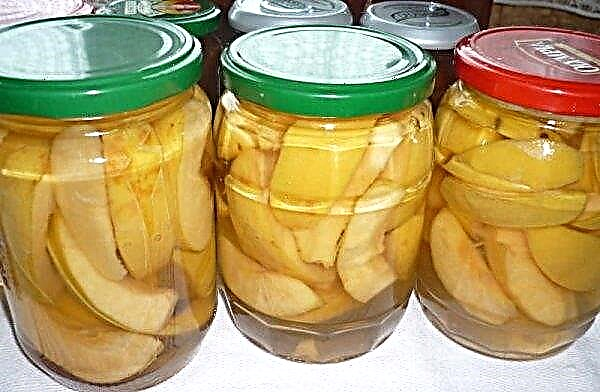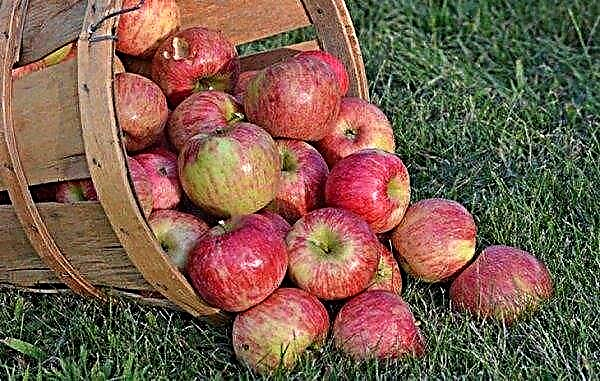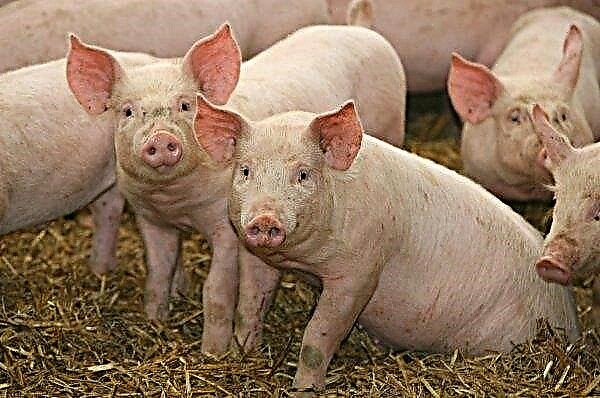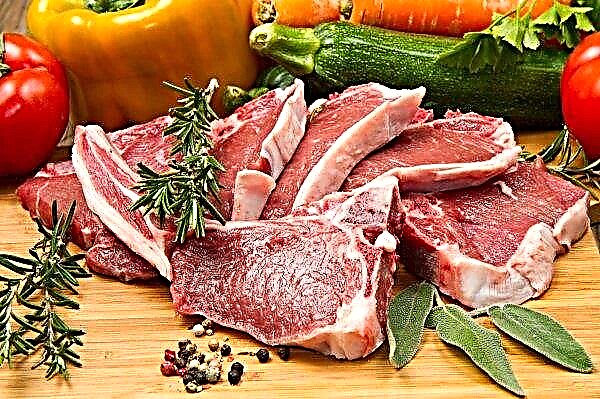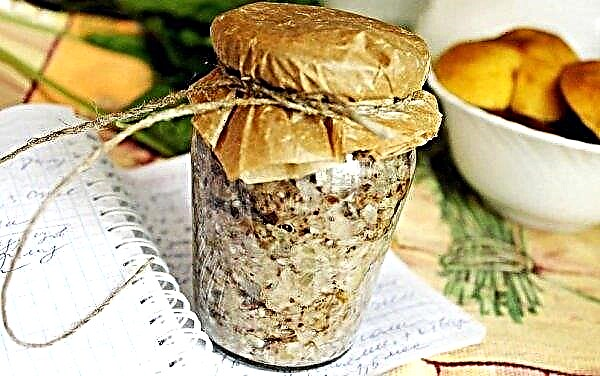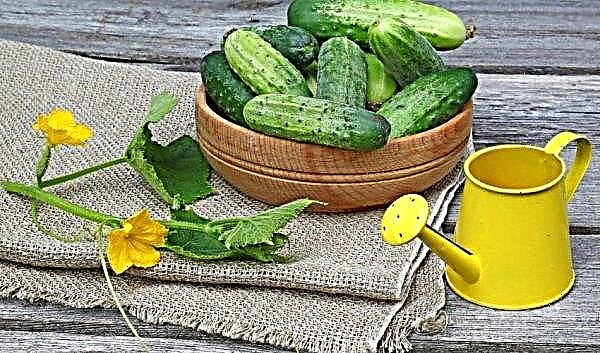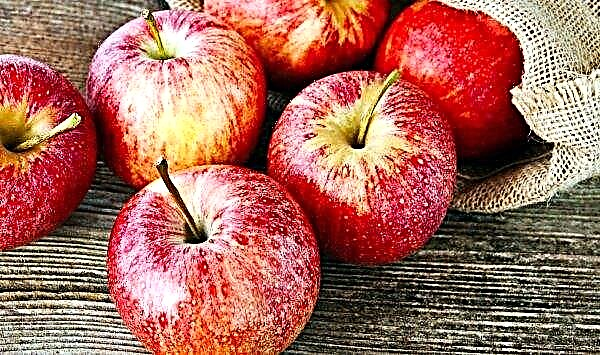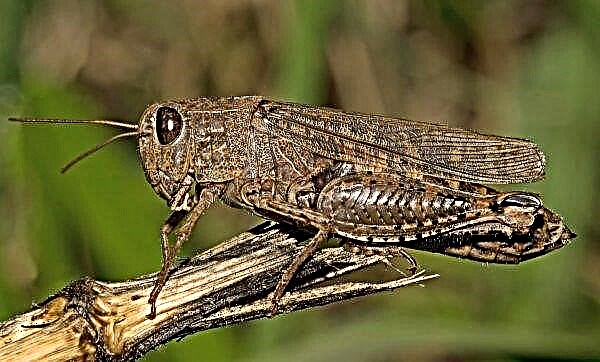Hydrangea Freeze Melba belongs to panicled varieties. This variety is attractive not only for its decorative effect, but also for its higher resistance to adverse environmental factors than similar ones. This allows the plant to be cultivated even in cool climates.
Grade description
Panicled hydrangea cultivar Fraise Melba (Fraise Melba Renba) is the fruit of long selection work. The main task of scientists was to develop a plant resistant to cold, since most varieties are thermophilic and do not take root in northern latitudes. The author of the variety is Gen Reno.

Plant Description:
| Life form | shrub 1.7–2.1 m high |
| Shoots | hard, almost erect, burgundy with a brownish tint |
| Sheet plates | ovoid, narrow, serrated, dark green |
| Inflorescences | pyramidal shape, length from 30 to 55 cm, depending on the quality of care |
| Flowers | with a diameter of 3-5 cm, initially dairy, then they acquire pink and raspberry shades |
After planting, the plant blooms in the first year. The process begins in July and ends in late autumn. Unlike most varieties, this hydrangea has high frost resistance. It is able to tolerate a decrease in temperature to -29 ° C.
Did you know? In Japan, Buddhists grow hydrangeas in all of their temples. From its flowers make tea, symbolizing the divine nectar.
In terms of soil quality and moisture, the variety is quite demanding. The soil must be loose, moist, with an average or high level of acidity. Ideal for plants suitable land, including peat and substrate from under coniferous trees.
With regard to lighting, this variety is not capricious. It can grow and develop normally in abundantly lit areas and in shading. But in a strong shadow does not take root. With proper care, the bush grows and blooms for 30–40 years.

Landing and seat selection
Planting hydrangeas of this variety is carried out in a well-lit or partial shaded area, protected from draft. A good option would be accommodation near household buildings, residential buildings, fences or artificial ponds.
Check out more

Particular attention should be paid to the location of groundwater. If they are closer than at a distance of 1.5 m, even when planting at an elevation, vegetation will not take root. Hydrangea also will not be able to develop normally in areas flooded with water in spring and autumn.
Vegetation is planted in the spring, when the soil warms up to + 10 ° C and there will be no likelihood of return frosts. Prepare the site for landing begin in the fall.
The soil is dug up to a depth of 30 cm. Then it is disinfected with copper sulfate of 3% concentration.
After a week, for each 1 m², 10 kg are applied:
- peat;
- compost
- soil from coniferous forest.
Nutrients are planted to a depth of 30 cm. Hydrangea seedlings are best bought in a nursery. Sell planting material in pots.
 In the evening, before planting, you need to carefully water the plant to facilitate its removal from the tank.
In the evening, before planting, you need to carefully water the plant to facilitate its removal from the tank.
Landing Instructions:
- Dig a hole that is 2 times larger than the dimensions of the container in which the seedling is located. If several specimens are planted, then a step of 1.5 m is maintained between the recesses.
- Place a drainage layer (15 cm) at the bottom. For this, expanded clay or pebbles are suitable.
- Mix soil from the pit with 1 tbsp. superphosphate, 30 g of ammonium sulfate and 30 g of potassium sulfate.
- Pour 5 cm of the obtained nutrient substrate over the drainage.
- Carefully remove the hydrangea from the pot and transfer to the well.
- Fill the voids with soil, always aligning the plant along the root neck - it should be at the same level as it was in the tank.
- Seal the trunk circle, pour 10 liters of water into it.
- Mulch the soil around the plant with peat mixed in equal amounts with compost. Layer height - 15 cm.
How to care
This plant for proper development requires proper care. It consists in the implementation of basic agricultural activities. Due attention should be paid to watering and fertilizing.
Due to the fact that the plant blooms for a long time, it requires a fairly large amount of nutrients. In addition, you need to carefully monitor the condition of the soil and trim in time. If everything is done correctly, then the risks of reproduction of pathogenic microbes and pests are minimized.
Watering
Hydrangea Frize Melba needs to be watered 3 times a week throughout the summer. In autumn and spring, the frequency of water application is reduced to 1-2 times a week. In the rainy season, watering is not carried out at all.
The soil must be constantly moist and loose. For each instance, approximately 5-7 liters of water are consumed. Make liquid under the root. If there are a lot of plants on the site, then it is advisable to organize a drip irrigation system, which will supply the necessary amount of water directly to the rhizome.

Top dressing
Feed plants begin a year after planting.
They do this according to the following scheme:
- In the spring, before the swelling of the kidneys - slurry is bred with water in a ratio of 1: 2. For each plant spend 7 liters of fertilizer. If the soil is quite moist, then 20 g of nitrophoska is introduced into the trunk circle, closing it to a depth of 5 cm.
- In late June, before the formation of the buds - potassium humate (make the solution according to the instructions) and 20 g of superphosphate.
- 2 weeks after the second feeding - weak pink solution of manganese. Fertilizer will also protect against pests.
- Every 14 days - complex fertilizers for hydrangeas (solutions are made according to the instructions). The last top dressing is carried out 3 weeks before the cold snap.
Important! As a top dressing for hydrangeas, you can not use wood ash, lime and dolomite flour. These elements deoxidize the soil, which adversely affects the development of plants.
Mulching
Mulch is sprinkled as it settles. Be sure to loosen it after watering so that fungal spores and pests do not multiply. This manipulation is also necessary to ensure air access to the root system.
If the weather is too wet, it is recommended that you periodically completely change the layer of mulch to dry. This will avoid the risk of mold and rotting of the roots. Tilling with the capture of not only the mulching layer, but also the soil, is carried out 3 times for the entire season.
 The depth of cultivation of the soil should not exceed 10 cm.
The depth of cultivation of the soil should not exceed 10 cm.
Pruning
In spring and autumn, sanitary scraps are carried out. The purpose of the manipulation is to remove the shoots that are damaged and growing inside the crown.
In the autumn, in the first year after planting, all shoots shorten up to 3 buds. In the future, this manipulation is carried out in the spring, when active sap flow begins. At the same time, young branches shorten up to 3 buds, old ones - up to 4–5.
Important! In the first year after planting, flower buds are removed. This will allow the plant to adapt better and provide more magnificent flowering in the next season.
6 years after planting, anti-aging pruning begins. It involves the removal of old, non-flowering shoots under the root. The main thing: do not cut more than 1/4 of the total volume at a time.

Winter preparations
This plant should be prepared for the winter cold. Work aimed at this, begin to carry out in the fall. When the vegetation fades, sanitary pruning is performed as described above. 3 weeks before the onset of cold weather, the shoots are exposed to half, removing the leaves in the lower part.
Then make the last fertilizer with complex preparations in parallel with watering. Mulch and a layer of earth 10 cm thick are thoroughly loosened. A week after performing the described manipulations, carry out the hilling. To do this, use a mixture of peat and compost (1: 1). The layer height should be about 15 cm.
If the temperature in winter does not fall below -29 ° C, then spruce branches are laid around the bushes. Carry out work when the mark on the thermometer drops to 0 ° C. If the temperature in winter is less than -29 ° C, then after wrapping with spruce branches, the bushes are additionally insulated with lutrasil. It is simply thrown on top of the plants and fixed to the ground with staples.

Diseases and Pests
When growing hydrangeas of this variety, gardeners may face the problem of the spread of diseases and pests.
The main diseases of hydrangea:
- Chlorosis - It is treated with Ferrovit or Antichlorosis drugs. They are bred according to the instructions. You can also make a solution of 1 liter of water, 4 g of citric acid, 2 g of iron sulfate. This composition treats the foliage and soil around the bush. In addition to treatment with preparations with iron, it makes sense to replace the layer of mulch with soil from under coniferous trees.

- White rot - eliminated by copper chloride. The solution is 1% concentration. They are watered with vegetation 3 times per season with an interval of 20 days. Between the use of copper oxychloride, Phytosporin is added to the water for hydration. The dose is selected according to the instructions. The solution is applied not only to the soil, but also sprayed with foliage. Before treatment, the affected parts of the plant must be cut off. If the bushes began to fade, it is better to transplant them to a new place, after removing rotten roots.
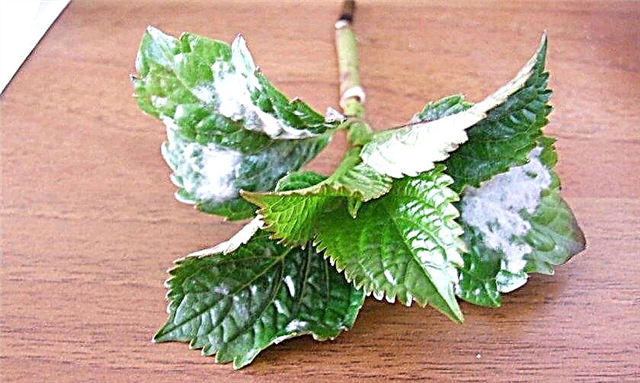
- Gray rot - is treated with the drug "Skor". Dilute it according to the instructions, make it into the soil and spray it on the leaves. Treatments are carried out every 20 days. Throughout the season, infected shoots and leaves are removed.

- Powdery mildew - is eliminated in the same way as gray rot.
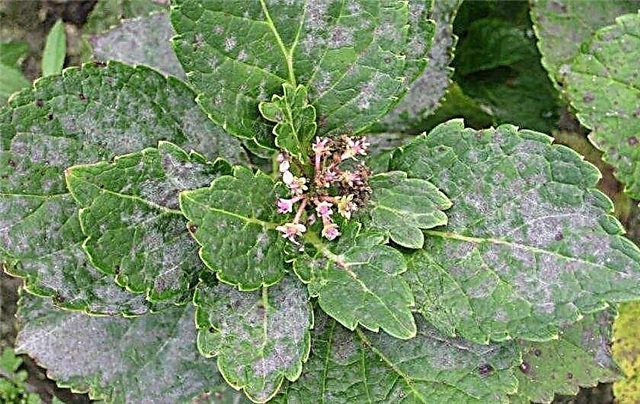
- Septoria - It is treated with 1% solution of copper sulfate.

Of the pests on hydrangeas, aphids, spider mites and slugs can settle. To get rid of them, dusting is carried out with tobacco dust on the leaf and soil. A solution of copper sulfate of 1% concentration is also effective against them.
Hydrangea Frize Melba in landscape design
Hydrangeas Freeze Melba are actively used in landscape design. They look good in single landings. Perfectly in harmony with different types of conifers, cuffs, rhododendrons, phloxes and stonecrops. Can be used as hedges. It is also possible to combine several varieties of hydrangeas with different colors.

Comparison of the varieties Frize Melba and Vanilla Frize
Another cold-resistant variety with a Melba-like appearance is Frize Vanilla. They were displayed in parallel.
Comparative characteristics of the varieties:
| Grade name | Melba | Vanilla |
| Bush | Sprawling, 1.7–2.1 m high | Sprawling, up to 1.5 m high |
| Inflorescences | Pyramidal, up to 55 cm long | Pyramidal, up to 40 cm long |
| Flowers | 3-5 cm in diameter, milky, later pink and raspberry | 3-5 cm, creamy, later pink and dark cherry |
| Frost resistance | Up to -29 ° С | Up to -29 ° С |
The only difference between these varieties is the final color of the flowers.

Vanilla is also resistant to adverse environmental factors and requires similar care. These varieties get along well together. They are ideal for cultivation in the harsh climate of Siberia and the Urals.
Did you know? Hydrangea symbolizes grace, beauty, abundance.
Hydrangea variety Freize Melba is perfect for cultivation in different climatic zones. With proper care, the bushes retain their decorative effect and bloom for 40 years. They tolerate neighborhood with other cultures well.






